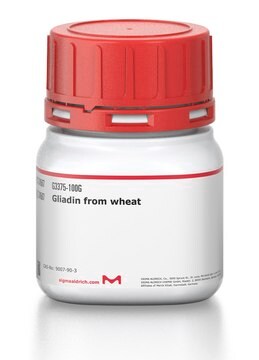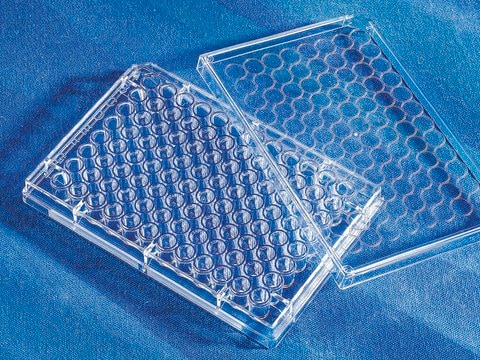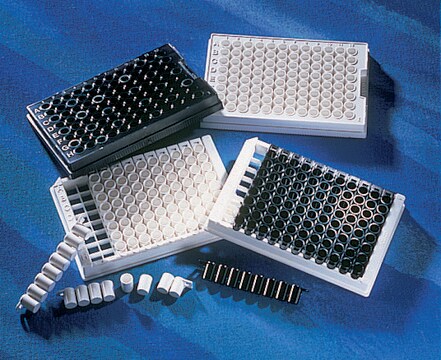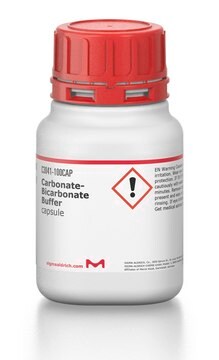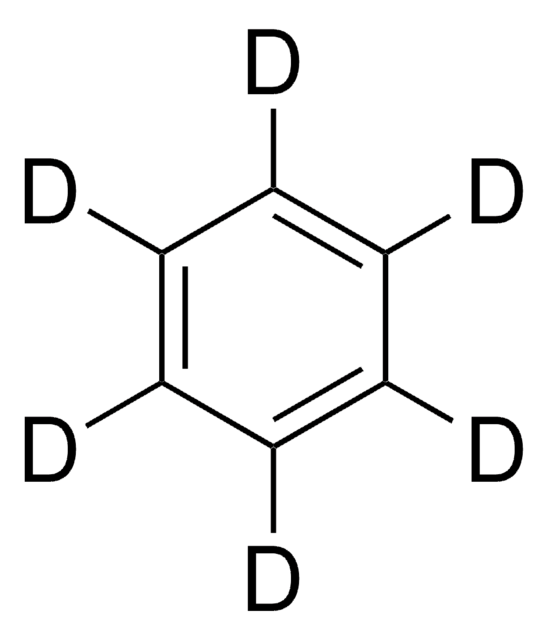SAB4200864
Anti-Gliadin antibody, Mouse monoclonal
clone GLD7, purified from hybridoma cell culture
Sinónimos:
Prolamin, alpha-gliadin
About This Item
Productos recomendados
antibody form
purified from hybridoma cell culture
Quality Level
clone
GLD7
species reactivity
plant
concentration
~1 mg/mL
technique(s)
ELISA: 0.12-0.06 μg/mL using wheat gliadin (Sigma #G3375)
immunoblotting: 1-2 μg/mL using wheat gliadin (Sigma #G3375)
isotype
IgG1
UniProt accession no.
shipped in
dry ice
storage temp.
−20°C
target post-translational modification
unmodified
General description
As plant proteins, they are recognized as prion-free 2.Gliadin can adhere to the mucus layer of the stomach due to its mucoadhesive property, which is a result of various interactions (e.g., hydrogen bonding, van der Waals force, and mechanical penetration).
Specificity
Application
Biochem/physiol Actions
The tissue transglutaminase-catalyzed changes in gliadin are not restricted to single gliadin types, for example, prolamines in barley and rye (known as hordelin and secalin, respectively) and these may induce a messenger RNA-mediated interferon-gamma response in the small-intestinal mucosa of celiacs. An alpha-2-gliadin-33-mer appears to pass through the enterocyte brush border membrane by a dose-dependent translocation mechanism, and this is further enhanced by interferon-gamma, possibly mediated by a delayed epidermal growth factor endocytosis. In active celiac disease, this immune-mediated response is very complex and involves many different mediators (such as Interlukin-21 from activated CD4+ Tcells) some are still being studied.
With genetic susceptibility, gliadin may interact with interenterocyte tight junctions and cause their disassembly. Moreover, Gliadin peptides may bind to the chemokine receptor, CXCR3. This induces zonulin release from the tight junction region and causes a resultant increase in intestinal permeability. Permeability increases have also been demonstrated prior to the onset of clinically apparent celiac disease, and even with a gluten-free diet, this altered tight junction permeability may not completely return to normal3.Anti Gliadin antibody may serve as an important tool in Celiac disease research field.
Physical form
Storage and Stability
Disclaimer
Storage Class
12 - Non Combustible Liquids
wgk_germany
nwg
Elija entre una de las versiones más recientes:
Certificados de análisis (COA)
Lo sentimos, en este momento no disponemos de COAs para este producto en línea.
Si necesita más asistencia, póngase en contacto con Atención al cliente
¿Ya tiene este producto?
Encuentre la documentación para los productos que ha comprado recientemente en la Biblioteca de documentos.
Nuestro equipo de científicos tiene experiencia en todas las áreas de investigación: Ciencias de la vida, Ciencia de los materiales, Síntesis química, Cromatografía, Analítica y muchas otras.
Póngase en contacto con el Servicio técnico